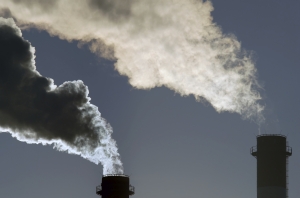MELBOURNE, November 24, 2016 – Following the release of today’s Emissions Reduction Fund (ERF) auction results, below, we summarise the key outcomes and implications.
KEY OUTCOMES OF AUCTION FOUR
- The Clean Energy Regulator has contracted 34 million tonnes (Mt) of Australian Carbon Credit Units (ACCUs), down from 50 million at the third ERF auction.
- $367m was committed (14% of the total ERF budget), down from $516m at the third ERF auction
- 47 contracts were awarded, down from 73 at the last auction
- Land-use and waste projects again dominated, contracting 86 per cent of all funding. Vegetation won 43 per cent and Agriculture projects won 25 per cent of all funding.
- Industrial projects from high emitting companies accounted for just 14 per cent of all contracts.
- $440 million remains in the government’s $2.55bn funding commitment, or 17 per cent of the initial budget, with the final auction expected to take place in April 2017.
IMPLICATIONS AND ANALYSIS
Hugh Grossman, Executive Director of RepuTex, noted that the lower number of greenhouse gas emissions reductions contracted by the Clean Energy Regulator indicates that proponents, particularly high emitting companies, are losing interest in the ERF.
“Results indicate that interest in the ERF has fallen, with low supply and reduced competition leading to a nominal increase in the average price of abatement, in line with our earlier outlook” said Mr Grossman.
According to RepuTex, while land-use projects continue to contract at high levels, industry is yet to engage with the government’s voluntary ERF scheme due to administrative complexity, and the low price of carbon on offer.
“The low participation of industry reflects market sentiment,” said Mr Grossman.
“The administrative complexity of the scheme, the diminishing budget and the low price of carbon have dampened interest in the ERF. This is unlikely to change until compliance obligations are placed on industry to offset their emissions” he said.
The final ERF auction is expected to be held in early 2017, with just 17 per cent, or $440 million remaining in the government’s initial $2.55bn funding commitment. No further funding has been allocated to the ERF, with a decision on future funding expected to be wound into the government’s 2017 climate policy review, reporting in November 2017.
“We continue to assume that another small auction will be held in early 2017 which will conclude the first tranche of funding for the ERF” said Mr Grossman
“This will bring the scheme to a close for the foreseeable future” he said.
NATIONAL EMISSIONS TO GROW TO 2020
National emissions are forecast to increase despite the Emissions Reduction Fund, leaving Australia short of cutting its emissions to minus 5 per cent on 2000 levels by 2020.
The latest Department of Environment figures indicate that national emissions will increase from 534 million tonnes (Mt) in 2015 to 577 Mt by 2020 – an increase of 8 per cent – to be 3 per cent above 2000 levels by 2020, well short of a minus 5% cut (519 Mt).
Emissions growth is projected to be driven by the Energy sector, underpinned by the ramp-up of Australia’s liquefied natural gas (LNG) export capacity, with production expected to more than double by 2020 due to new export facilities such as Gorgon, Ichthys and Prelude.
While emissions will not reach minus 5 per cent by 2020, RepuTex suggests that Australia will still meet its international commitment under the Kyoto Protocol by utilising credits for past performance, estimated to be approximately 130 million tonnes, earned under the first period of the Kyoto Protocol (2008-12).
“Australia’s accounting of cumulative emissions will give us a buffer to meet our international commitment under the Kyoto Protocol, however Australian emissions will not reach minus five per cent by 2020” said Mr Grossman.
According to RepuTex, the failure to cut emissions to minus 5 per cent by 2020 will come at a cost given emissions increases will add to the cost of meeting Australia’s 2030 target.
“In a way, we’re robbing Peter to pay Paul” said Mr Grossman.
“Our short-term emissions increases can be covered by our surpluss credits under Kyoto, but by letting emissions increase we simply start from a higher level after 2020, which adds to the cost of meeting our long-term target” he said.
The government will undertake a review of its climate policy in June, reporting by November next year, with industry consultation expected to commence shortly.
“How state and federal policy levers interact, how they are coordinated at the national level, and how much they cost, remain key questions for business and policymakers,” he said.
RepuTex is Australia’s largest provider energy and emissions market analysis, with customers at over 150 power, energy, metals, mining, land-use, waste, financials and government agencies.
MEDIA CONTACTS
RepuTex spokespeople are available for comment. Please contact RepuTex Melbourne on 61 3 9600 0990.













